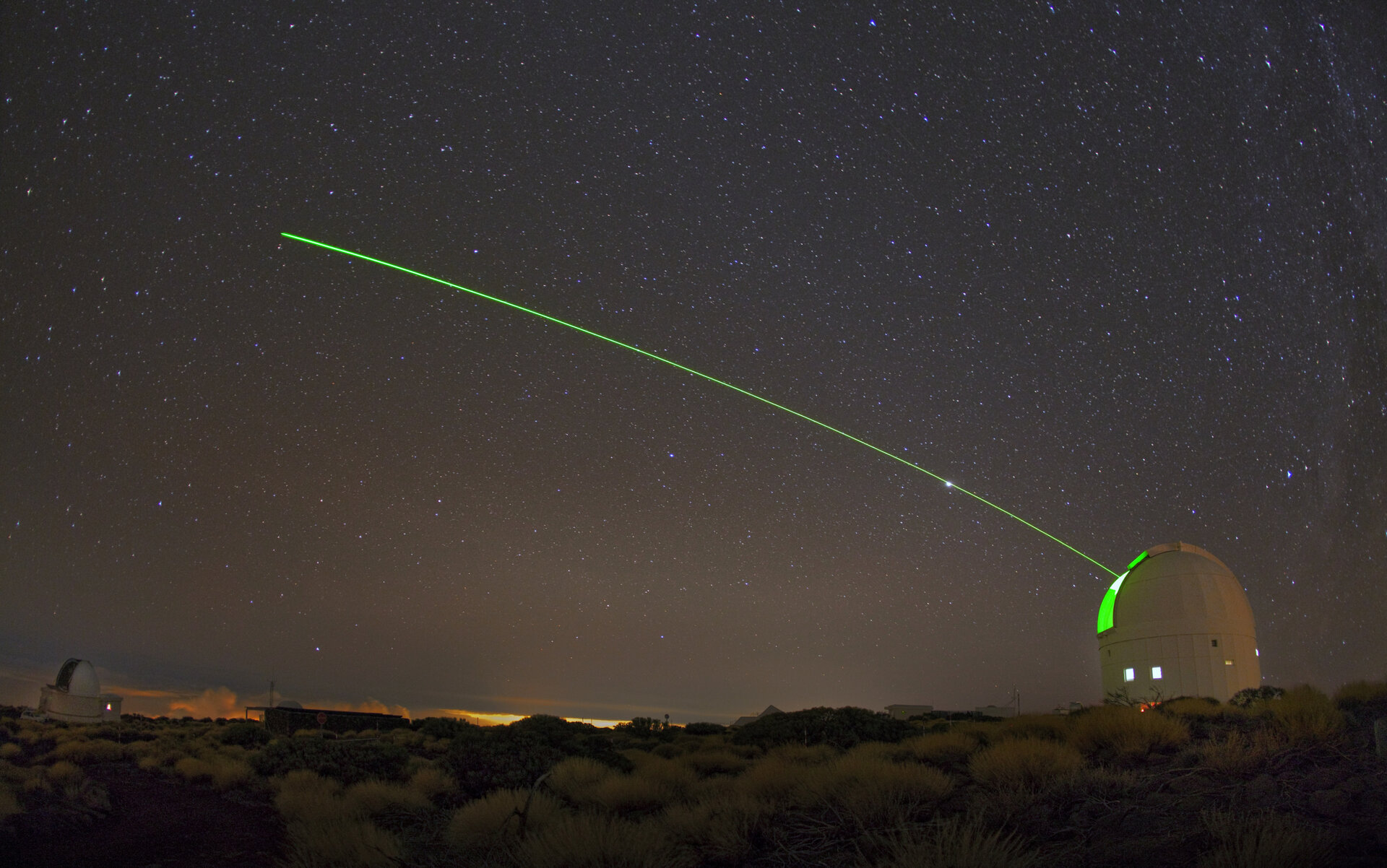ESA’s site for laser and quantum links marks 25 years
18/11/2022
91 views
2 likes
ESA’s Optical Ground Station, perched high on the slopes of Tenerife’s Mount Teide volcano, has now been peering skyward for a quarter of a century. Originally designed for laser-based communications with satellites, it is today additionally employed for tracking space debris and near-Earth asteroids as well as supporting world-class science: this year’s Physics Nobel Prize winner used the station for a quantum teleportation experiment that extended to the neighboring island of La Palma.
The Optical Ground Station, OGS, is a cryogenically-cooled 1-m diameter telescope within a domed observatory, equipped with a titanium-sapphire laser and state-of-the-art photon detectors to pick up optical communication signals from either low or geostationary orbit. The OGS is hosted at Teide Observatory, operated by Instituto de Astrofísica de Canarias, IAC, up at 2 400 m altitude, well above the cloud layer, and at the closest to the equator of any ESA Member State territory.
Managers from ESA’s Mechanical Department and experts from its Opto-Electronics section, responsible for managing OGS, met with IAC representatives to mark the silver anniversary and discuss the future role of the OGS.
“The station functions as a testbed for opto-electronics technology, driving performance forward in optical communications for space,” remarked Jose Gavira, Head of ESA’s Mechanical Department.
“At today’s event we’ve been discussing new optical instrumentation, cryo-cooling and adaptive optics systems that could improve its performance still further. In particular the OGS will have a key role in testing new quantum communications systems through free space, which represent a means of unhackable secure connectivity.”
The OGS was created through an agreement between ESA and IAC in 1994, in order to test laser-based optical communications with satellites. Because light has a much shorter wavelength than radio signals, high bandwidth linkage becomes feasible.
The station became operational in 1997 and it achieved the milestone of the first laser-based communication link in 2001, first with ESA’s Artemis satellite in geostationary orbit, then with satellites in lower orbits – more challenging because they are in constant motion relative to Earth’s surface and visible only briefly in the local sky, requiring the telescope and laser to track their motion.
The OGS even established an optical uplink and downlink all the way to the Moon, with NASA’s LADEE lunar orbiter in 2013. It also performed invaluable check outs of the optical terminals used on many ESA and European satellites – notably the European Data Relay Satellites, which relay Earth observation data back from the Copernicus Sentinel satellites.
The station’s excellent optical performance means that it is also relied upon by ESA’s Space Safety programme to observe orbital debris as small as 10 cm up to geostationary orbit, 36 000 km up in space, and for asteroids much further out still. For instance, it was one of the first observatories to perform follow-up observations of the ‘Oumuamua asteroid/comet in 2017, helping to ascertain the mysterious body’s interstellar origin.
For more than two decades the OGS has been observing debris for around 10 nights per month, and four nights per month for asteroids, with observations focused on the darkest nights around new Moon. The station is also used by ESA and IAC for purely astronomical observations.
For all the latest Technology News Click Here

